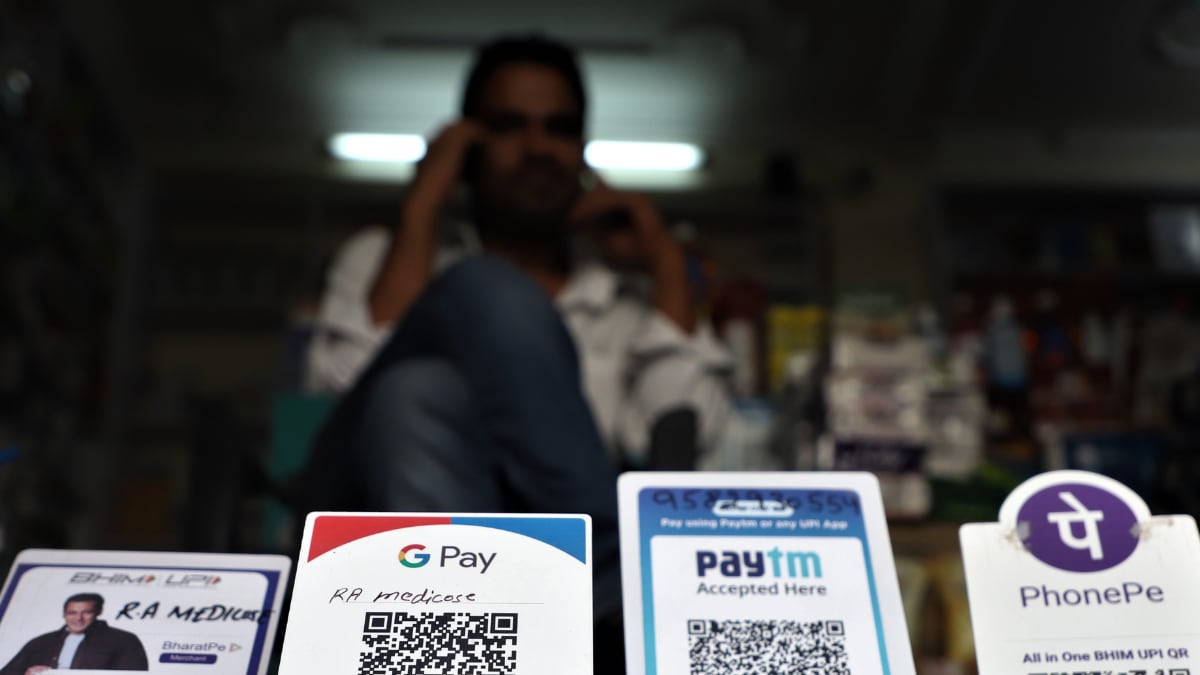Reported By: Aman Sharma
Edited By: Shilpy Bisht
News18.com
Last Updated: September 08, 2023, 13:28 IST
New Delhi, India
Bank's cost of onboarding customers in India decreased from $23 to $0.1 with the use of Digital Payment Infrastructure, the World Bank document said. (Representative image)
Without Digital Payment Infrastructure (DPI) such as Jan Dhan Bank accounts, Aadhaar, and Mobile phones (the JAM trinity), India may have taken 47 years to achieve financial inclusion rate of 80% which the country has achieved in just six years, says a G20 policy document prepared by the World Bank. News18 now has a copy of the document.
The World Bank document has also recorded that the total value of UPI transactions last financial year was nearly 50% of India’s nominal GDP. “Banks’ costs of onboarding customers in India decreased from $23 to $0.1 with the use of DPI. As of March 2022, India did total savings of $33 billion, equivalent to nearly 1.14% of GDP, due to Direct Benefit Transfer (DBT),” says the World Bank document accessed by News18.
This G20 Global Partnership for Financial Inclusion (GPFI) document has been prepared by the World Bank as an implementing partner of the GPFI with the guidance of and inputs from the G20 India Presidency represented by the finance ministry and the Reserve Bank of India (RBI), it says. India is planning to showcase its successes on the digital payments and financial inclusion front at the G20 Summit in New Delhi this weekend.
The World Bank document says the India Stack exemplifies the DPI approach by combining digital ID, interoperable payments, a digital credentials ledger, and account aggregation. “In just six years, it (the India stack) has achieved a remarkable 80% financial inclusion rate — a feat that would have taken nearly five decades without a DPI approach. Implementation of DPIs such as Aadhaar, along with the Jan Dhan bank accounts and mobile phones, is considered to have played a critical role in moving ownership of transaction accounts from approximately one-fourth of adults in 2008 to over 80 percent now,” the report says.
India's leap in financial inclusion, powered by Digital Public Infrastructure! A G20 document prepared by the @WorldBank shared a very interest point on India's growth. India has achieved financial inclusion targets in just 6 years which would otherwise have taken at least 47…
— Narendra Modi (@narendramodi) September 8, 2023
Since its launch, the number of Pradhan Mantri Jan Dhan Yojana (PMJDY) accounts opened tripled from 147.2 million in March 2015 to 462 million by June 2022; women own 56% of these accounts, more than 260 million. It says while DPIs’ role in this “leapfrogging is undoubtable”, other ecosystem variables and policies that build on the availability of DPIs were critical. “These included interventions to create a more enabling legal and regulatory framework, national policies to expand account ownership, and leveraging Aadhaar for identity verification,” the report says, mentioning the measures taken by Narendra Modi-led government.
It cites how adoption of Fast Payment System (FPS) like UPI has been particularly “quick and transformative” in India. “UPI has been widely adopted, benefitting from a user-friendly interface, open banking features, and private sector participation. The UPI platform has gained significant popularity in India; more than 9.41 billion transactions valuing about Rs 14.89 trillion were transacted in May 2023 itself. For the financial year 2022-23, the total value of UPI transaction was nearly 50% of India’s nominal GDP,” the World Bank report has said.
The report also says DPIs can enhance efficiency for private organisations through reductions in the complexity, cost, and time spent on business operations and for some non-bank financial companies (NBFCs) in India, the Account Aggregator ecosystem enabled an 8% higher conversion rate in SME lending, a 65% savings in depreciation costs, and a 66% reduction in costs related to fraud detection.
“According to industry estimates, banks’ costs of onboarding customers in India decreased from $23 to $0.1 with the use of DPI. The India Stack has digitised and simplified KYC procedures, lowering costs; banks that use e-KYC lowered their cost of compliance from $0.12 to $0.06,” the World Bank report mentions.
The report mentions how in the last decade, India built one of the world’s largest digital Government-to-People architectures leveraging DPI. “This approach has supported transfers amounting to about $361 billion directly to beneficiaries from 53 central ministries through 312 key schemes. As of March 2022, this resulted in a total savings of $33 billion, equivalent to nearly 1.14% of GDP,” the report adds.
